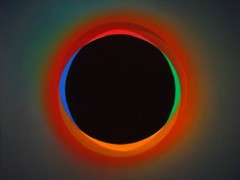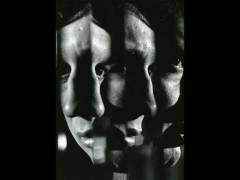Soleil froid – Palais de Tokyo
27 February – 20 May, 2013
Palais de Tokyo, Paris
“Generally speaking, I have tried, through my experiments, to elicit a different type of behavior from the viewer […] to seek, together with the public, various means of fighting off passivity, dependency or ideological conditioning, by developing reflective, comparative, analytical, creative or active capacities.”
Julio Le Parc
An artist of historical importance and an influential figure in contemporary art, Julio Le Parc´s work is presented for the first time in France in such a large exhibition. His socially committed art is an immersive art, in which, through Le Parc’s study of light and movement, the visitor is invited to discover new ways of interacting with the world. We discover a practice that rejects psychologism, an art that participates in a social utopia and which, following an industrial model, participates in the constant reconstruction of our environment. Spread over 2,000 square meters, this exhibition at the Palais de Tokyo allow us to apprehend all facets of an oeuvre constituted of paintings, sculptures and monumental installations.
A visionary Engaged Artist
A precursor of kinetic art and Op Art, founding member of G.R.A.V. [Visual Art Research Group] and recipient of the Grand Prize for Painting at the 33rd Venice Biennale in 1966, Julio Le Parc (b. 1928 in Argentina, lives and works in Cachan) is a major figure of art history. The socially conscious artist was expelled from France in May 1968, after participating in the Atelier Populaire and its protests against major institutions. A defender of human rights, he fought against dictatorship in Latin America. An uncompromising personality, in 1972 he refused to hold a retrospective exhibition at the Musée d’Art Moderne de la Ville de Paris, after flipping a coin to make the decision.
An Influential Figure for the Young Generation
Julio Le Parc’s examinations of the visual spectrum, of movement, light, and of the relationship between the work and the spectator, remain highly relevant today. The visitor’s physical involvement and visual disturbance, as well as the reduction or expansion of shapes, are foremost concerns for the many artists who continue to build today on Le Parc’s research. The exhibition illustrates the extent to which the work of this artist, still young at 84 years of age, remains current, to convey his spirit of investigation and experimentation, and to allow the public to discover, or rediscover, his generous, playful and visionary work.
The Artist’s first Large-scale Monographic Exhibition in France
This important monographic exhibition of Le Parc’s work, including large-scale installations in the Palais de Toyko’s entrance hall, features a selection of landmark works ranging from the 1950s to today. Certain of them are adaptations, scaled to their environment, of historical works, thereby endowed with a new life. The exhibition also presents the opportunity to move beyond the seductive appearance of Julio Le Parc’s work, in order to confront his more political, even utopic, works. The layout of the exhibition plays on the contrast between dark and bright areas, with certain works floating in space: a sensory experience combining light, energy and movement.
Practical Info
13, avenue du Président Wilson
75 016 Paris


 Home
Home

